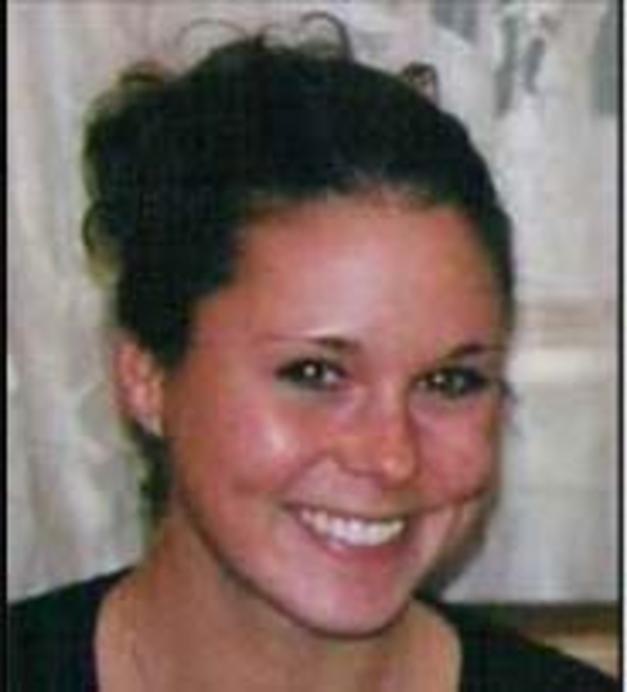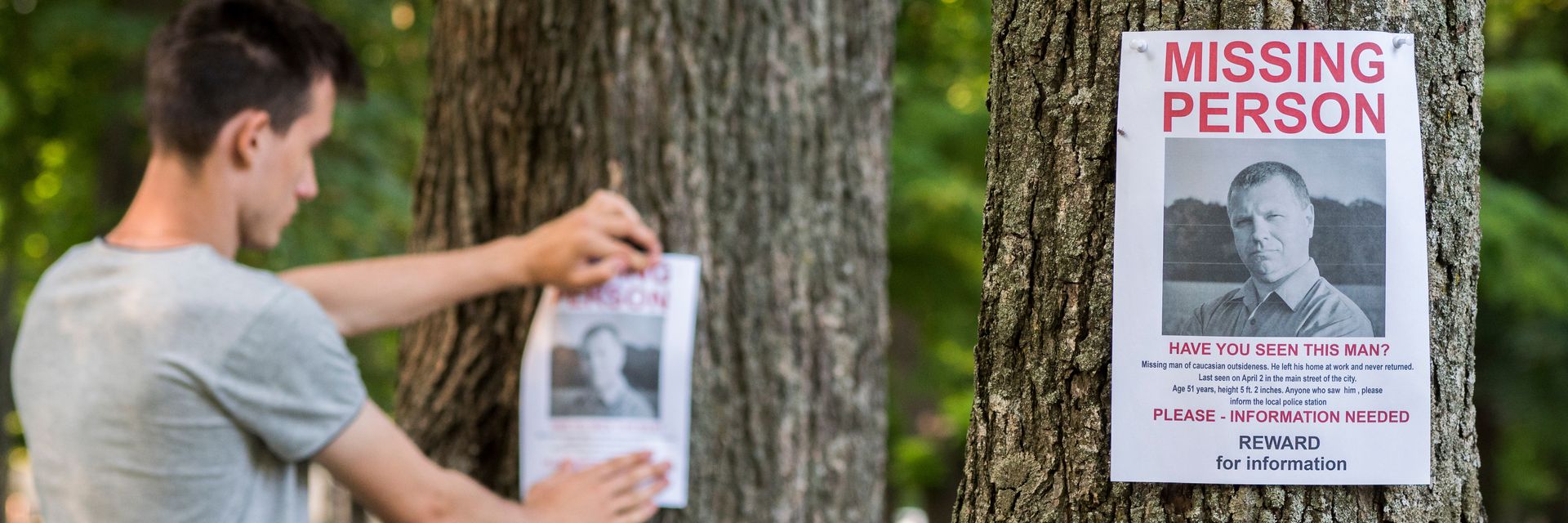In the United States, the majority of missing persons cases are solved. Others, however, remain perplexing mysteries.
◊
Anyone who has lost a loved one grapples with the need for proverbial “closure.” Whatever the cause of death, closure might come in the form of a proper goodbye or coming to grips with words unsaid; sharing a eulogy at a funeral service; or in the scattering of ashes. In the case of homicide, closure can mean holding others to account through the justice system. Closure, however, can feel unattainable, a too-tidy denouement for the often complicated grieving process. Closure is especially elusive when a missing person is never located, with the truth behind their disappearance remaining unknown.
Technology and the Internet have provided new tools for law enforcement to locate the missing. They’ve also paved the way for true crime communities to form their own theories about the whereabouts of missing people, potentially shedding new light on the cases. Alternatively, however, these discussions can be rabbit holes of misinformation, leading even well-intentioned individuals to grasp onto irrational explanations. But, then again, certain missing persons cases do strain the limits of rationality; it’s almost as if, sometimes, people truly vanish into thin air. Here are three of the most confounding missing persons cases in the United States that remain unsolved to this day.
Are you craving quality stories of unsolved murder cases? Check out the series Donal Macintyre: Unsolved on MagellanTV.
Maura Murray Vanishes into the Woods
On the evening of February 9, 2004, 21-year-old nursing student Maura Murray left the University of Massachusetts-Amherst campus and drove to Woodsville, New Hampshire. There, she crashed her vehicle in a wooded area and disappeared.
Murray, while outwardly on track for success, had experienced a series of perplexing setbacks.
For example, before Murray studied nursing, she was a cadet at West Point. Circumstances soured in August 2001, when Murray was caught shoplifting. Perhaps to avoid repercussions, she transferred to UMass. Later, in November of 2003, Murray was caught ordering food using a stolen credit card and was placed on probation at the university.

(Source: FBI.gov)
Additionally, the night before she vanished, she was in an accident while driving her father’s car. Though her father was reportedly understanding, the crash resulted in $10,000 in damage and Murray likely felt remorseful. Regardless of the fallout from that incident, on February 9, Murray showed up at her job working the front desk of an on-campus dormitory. During her shift, however, her supervisor later reported to police that Murray had become emotionally distressed and was accompanied back to her own dorm.
In the hours before her departure from the UMass campus, Murray notified her professors that she would be absent, falsely claiming there was a death in her family. Murray’s Internet history would subsequently reveal searches for lodging accommodations in the White Mountains as well as information about the effects of alcohol on an unborn baby, leading to police speculation that she may have been pregnant.
Later that afternoon, Murray was seen on an ATM camera withdrawing $280. She was then recorded on surveillance cameras at a liquor store, where she purchased a significant amount of alcohol.
At 7:27 that evening, a resident of Woodsville, New Hampshire, called police to report a car accident. Moments later, a bus driver noticed the crashed car and spoke to Murray. She was insistent he not call the police. After returning home, though, the bus driver did notify authorities, directing them to the crash site. When they arrived, they found her belongings in the car and some wine splashed around the vehicle's interior – but Murray herself was nowhere to be found.
In the process of tracing Murray’s final night on and near the UMass campus, investigators discovered a new potential clue. Within an hour before Murray’s supervisor accompanied her back to her dorm, a student named Petrit Vasi was struck by a vehicle. He survived but was unable to identify the driver. Some investigators have suggested that Murray briefly left her work post and was responsible for hitting Vasi. After doing so, the theory goes, she panicked and left town with plans to harm herself or disappear. Further speculation suggests she crashed her car to cover up the damage from the hit-and-run.

Mugshot of Maura Murray after arrest for shoplifting (Public Domain)
Did Murray take her own life as a result of her personal struggles? Whether or not Maura was involved in the hit-and-run, evidence suggests that she was at a point of crisis, which may have led her to distance herself from the triggering events. Perhaps, after leaving her vehicle, she intentionally entered the dark woods, subsequently dying of exposure.
Another theory is that Murray met with foul play. Murray’s boyfriend Bill Raush became an obvious suspect, but, at the time of her disappearance, he was in the Army and stationed at Fort Sill in Oklahoma. In addition, Murray had called and texted Raush before vanishing, with no indication that the two planned to meet.
In yet another twist to the story, Murray was also having an affair with a field coach at UMass named Hossein Baghdadi. Although Raush and Baghdadi were cleared of involvement by police, both (particularly Raush) have remained persons of interest within the court of public opinion. In fact, Raush reemerged in the spotlight in 2019 after being indicted on charges of felony third-degree sexual abuse of a coworker.
Of all the theories, Murray’s family suspects that, regardless of her reasons for driving to New Hampshire, she was most likely abducted. Police thoroughly searched the area with cadaver dogs, however, leading to no definitive answers.
In 2004, a man named Larry Moulton reported that his brother, Claude, who lived near Murray’s crash site, may have been involved in her disappearance. Though forensic evidence was collected from the potential suspect’s home, no arrests were made.
Murray’s family continues to search for explanations. Earlier this year, they expressed their frustration at the lack of progress on the case by protesting at the New Hampshire Attorney General’s Office.
Maura Murray’s disappearance left behind many scattered clues, yet few concrete leads. The baffling circumstances and lingering questions have led to a plethora of books, podcasts, contentious Reddit threads, and documentaries. Despite the lack of case-breaking developments, Murray remains very much in the public consciousness.
Brian Shaffer Walked into a Bar . . . and Never Exited
Brian Shaffer, a medical student at Ohio State University, disappeared from the Ugly Tuna Saloona in Columbus, Ohio, on March 31, 2006. That evening, Shaffer had dinner with his father before meeting up with friends William Florence and Meredith Reed. Late in the night, Florence and Reed became separated from Shaffer at the busy bar. When he didn’t return, they simply thought he had headed home. But when he didn’t communicate with his father or girlfriend the following day, they reported him missing.

(Source: FBI.gov)
Shaffer was a successful student who deeply loved music and had close ties to the community. Though he was grieving his recently deceased mother, those who knew him were skeptical that he would self-harm or fake his death to pursue a new life.
Police pored over surveillance footage from the bar, noting that there was only one public entrance and exit at the establishment. Peculiarly, none of the security cameras showed Brian leaving, not even the one surveilling the service entrance. Nor was he spotted on any of the businesses’ cameras in the area. Also, every other individual who entered the bar that night was accounted for on camera as they exited, which discredits the idea that Shaffer left the bar in disguise.
If Shaffer didn’t intentionally disappear, maybe he was murdered or abducted. His friend William Florence became a person of interest, but police found no viable motive for violence. And, even if Florence had harmed Shaffer, how did he do so in such a short timeframe, and where was the body?
Another possibility is that Shaffer stumbled into an active construction site that was located behind the Ugly Tuna Saloona. Might he somehow have become trapped inside a wall or encased in cement? Between the lack of evidence and the implausibility of construction workers not noticing a person stuck in such a dire situation, police dismissed this explanation. Similarly, if Shaffer somehow died inside the building – whether accidentally or at the hands of a killer – surely his remains would have been found.
So, what happened to the man who walked into a bar and never came out?
With many rational explanations discredited, paranormal theories like alien abduction or Shaffer slipping into an alternate dimension have been floated. While these theories may seem preposterous, between Shaffer evading surveillance and the absence of bodily remains, his disappearance remains unusually mystifying.
For another compelling and head-scratching case of missing persons never found, check out Who Killed Trudie Adams? on MagellanTV.
Asha Jaquilla Degree Disappears on Valentine’s Day
Asha Jaquilla Degree was nine years old when she went missing from Shelby, North Carolina, on February 14, 2000 – Valentine’s Day and her parents’ wedding anniversary. Before dawn, amidst heavy rain and wind, Asha seemingly woke, dressed, packed her bookbag, and departed her home. At around 6:30 that morning, Asha’s mother discovered that she wasn’t in her bed and nowhere on the family’s property. She also checked with family members living nearby to see if they knew of her whereabouts. When no clues surfaced, they called the police.
After hearing about the missing girl on the news, a motorist and a trucker contacted authorities. They each reported seeing Asha walking on North Carolina Highway 18, describing her as a figure wearing white clothing and tennis shoes, her hair in pigtails. The motorist approached her but reported that she fled into a forest enclave near the highway.

Poster showing Asha Degree's possible age progression (Source: FBI.gov)
Shortly after the search for Asha began, a small number of her belongings – school supplies, candy wrappers, and a hairbow – were found in a shed near her last known location. Bizarrely, a photograph of a young girl around Asha’s age was also discovered; this child has never been identified. Few new clues emerged in the following months and the case grew cold. However, a year and a half later, Asha’s bookbag was found wrapped in a plastic trash bag, buried in the dirt on a construction site near Highway 18. The bookbag’s contents included a Dr. Suess book and a New Kids on the Block shirt, neither of which were previously known to be in Asha’s possession.
So, what happened to Asha?
Authorities initially thought Asha ran away, though she had no clear reason to do so. Her home life was reportedly safe and loving, and Asha was considered to be a happy child who loved playing basketball. Even if she had run away, why did she do so in the cold and gloomy pre-dawn hours?
One theory is that Asha was sleepwalking. Yet Asha’s actions that morning – including dressing in formal clothing, packing belongings, and even locking the doors behind her – suggest a level of intentionality that makes sleepwalking unlikely.
Unfortunately, kidnapping is a plausible explanation for any child who goes missing. According to the World Population Review, “By far the most common reason a person is reported missing is kidnapping, particularly of children under the age of six.” However, the majority of these abductions are by a non-guardian parent. In this case, maybe Asha had been communicating with someone on the school computer. Could an adult pretending to be a child have lured Asha with a present to give her parents on their anniversary? Or how about a grown-up deceiving her by requesting assistance in finding the mysterious girl in the photo?
In 2020, Marcus Mellon, an inmate serving time at the Alexander Correctional Institute for sex crimes, sent a letter to The Shelby Star newspaper claiming to have information about Asha Degree. Though police pursued the lead, the inmate’s alleged knowledge didn’t result in any movement on Asha’s case.
While grooming and abduction have emerged as the most logical explanations for Asha’s disappearance, the puzzle is frustratingly incomplete. One thing’s for certain: Those who follow the case won’t soon shake the haunting image of a small child dressed all in white, walking alone on a stormy highway, never to be seen again.

(Credit: Paul Sableman, via Wikimedia Commons)
Compassion for the Missing
Unsolved missing persons cases can be uniquely unnerving – especially when individuals appear to vanish into the ether. Online forums are a natural space for competing theories about the fates of the missing, whether logical or conspiratorial in nature. It’s almost as if, with information at the public’s fingertips and a bully pulpit at the ready, armchair detectives feel a sense of ownership over unsolved crime and missing person cases. But, while everyone loves a twisty mystery, at the center of each missing person case is . . . a person. It’s a fact surely never lost on those grieving their loved one’s absence and seeking that often elusive “closure.”
Ω
Matia Query is a freelance writer and the editor of BookLife, the indie author wing of Publishers Weekly. She lives in New York’s Hudson Valley.
Title Image source: Adobe Stock (Licensed)



